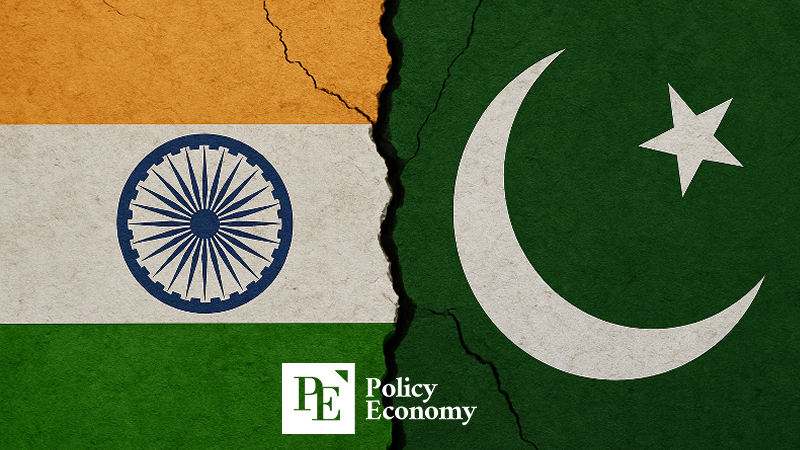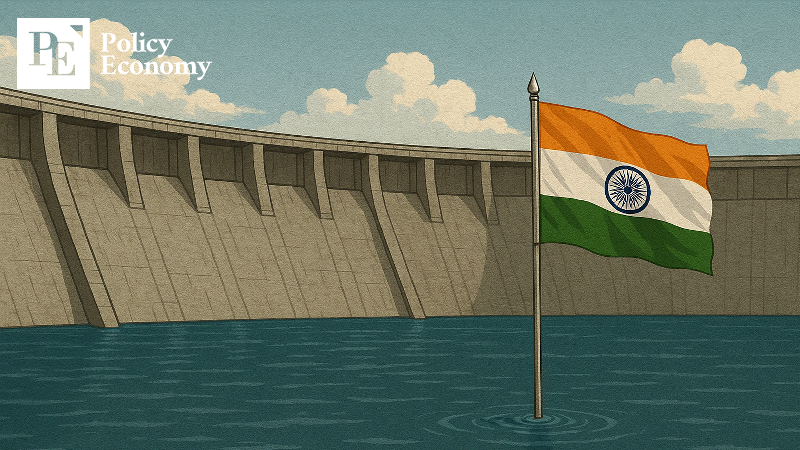“Missiles Now Involved” — India and Pakistan Enter Full-Scale Military Clash
Input
Modified
India launches missiles at Pakistan-administered Kashmir and other areas Suspends the Indus Waters Treaty and increases dam water flow Pakistan: "Tampering with the Indus River is an act of war"

It has been confirmed that India launched a missile attack targeting Pakistan. The military clash between the two countries has intensified following a terrorist attack near Pahalgam in Indian-administered Kashmir. In response to the missile strikes, Pakistan retaliated by shooting down Indian fighter jets.
India–Pakistan 'Full-Scale War'
According to reports from AP and other foreign media on the 7th (local time), the Indian government announced that its military had launched "Operation Sindoor" early that morning, targeting nine sites in Pakistan-administered Kashmir. On the same day, Pakistani authorities reported that India had fired missiles at five locations, including Kashmir and Punjab Province, killing at least eight people, including children. According to Pakistani Defense Minister Khawaja Asif, the Pakistani military shot down at least five Indian fighter jets. However, a senior Indian official told local media that not a single Indian jet was lost during Operation Sindoor.
The conflict between the two nations escalated after a shooting terror attack near the resort town of Pahalgam in Indian-administered Kashmir on the 22nd of last month. The attack resulted in the deaths of 26 people, including tourists, and injured 17 others. India identified Pakistan as being behind the attack and imposed strong sanctions: canceling visas for Pakistani nationals, banning imports of Pakistani goods, prohibiting Pakistani ships from docking, and suspending postal exchanges. In response, Pakistan denied any involvement and took countermeasures, including banning Indian aircraft from its airspace, suspending trade, and canceling visas for Indian nationals.

Water Dispute Emerges Amid Rising Tensions
India has recently escalated provocations by blocking the flow of water toward Pakistan. According to The Times of Indiaand other sources on the 6th, the Indian government has begun increasing the water storage levels at the Baglihar and Salal reservoirs—both hydroelectric dams on the Chenab River located in Jammu and Kashmir, eastern Kashmir. This marks India's first visible action after declaring the suspension of the Indus Waters Treaty in response to the Pahalgam terror attack.
The Indus Waters Treaty, signed in 1960 under the mediation of the World Bank, is an international agreement between India and Pakistan that allows Pakistan to use six tributaries of the Indus River originating in India.
Pakistan, which heavily depends on hydropower, could suffer a severe blow if India increases dam storage levels. On May 3, Muhammad Khalid Jamali, Pakistan’s ambassador to Russia, warned on a state-run Russian broadcast, “Any attempt to block or divert the Indus River is an act of war against Pakistan. We will use all available force, including nuclear capabilities.” Defense Minister Asif also stated, “Acts of aggression aren't limited to bullets or artillery. Blocking or diverting the Indus River could lead to deaths from hunger and thirst.”
Was This a Ticking Time Bomb?
As tensions escalate rapidly, some experts argue that military conflict between India and Pakistan was all but inevitable. One foreign policy expert remarked, “The relationship between the two nations was like a ticking time bomb. The Pahalgam attack simply served as a convenient trigger for an armed conflict.”
Hostility between India and Pakistan dates back decades, beginning with their partition along religious lines—Hindu-majority India and Muslim-majority Pakistan. The first clash occurred shortly after their separation in 1947 over the Kashmir region, a mountainous area bordering India, Pakistan, and China. The region, roughly 220,000 square kilometers in size (similar to the Korean Peninsula), has long been contested.
Though Kashmir’s population favored joining Muslim-majority Pakistan, its ruler at the time, Maharaja Hari Singh, was Hindu and chose to accede to India. This decision triggered an invasion by tribal militias backed by Pakistan, which escalated into a full-scale war. In 1949, the UN brokered a ceasefire, dividing Kashmir into Pakistan-administered (Azad Kashmir) and Indian-administered (Jammu and Kashmir) regions. The ceasefire line established in 1949 was renamed the Line of Control under the Simla Agreement in 1972.
The problem is that military clashes between the two nations have resumed over the past six years. In 2019, the Indian Air Force crossed the Line of Control for the first time since 1971, conducting airstrikes in Pakistan. This was in retaliation for a suicide bombing in Indian-administered Kashmir that year, which India blamed on a Pakistan-based terror group. Twelve Mirage fighter jets dropped bombs on Pakistani territory, prompting Pakistan’s air force to shoot down an Indian jet, bringing both nations once again to the brink of military confrontation.




















